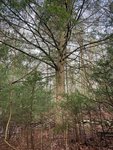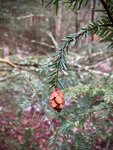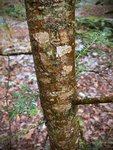Behind my home rises a great mother tree, a towering and majestic Eastern hemlock, whose home this was long before I joined her here.
Her mass rises from where it enters the earth, the place …
Stay informed about your community and support local independent journalism.
Subscribe to The River Reporter today. click here
This item is available in full to subscribers.
Please log in to continue |





Behind my home rises a great mother tree, a towering and majestic Eastern hemlock, whose home this was long before I joined her here.
Her mass rises from where it enters the earth, the place where she has anchored herself for many years, roots tunneling into the sloping hillside. Here, she sways so slightly in light breezes, encircled by a grove of her offspring. They climb ever upward to join her in their journey toward the light; they witness her wild thrashing when storms blow through; they claim their place in the forest community she oversees.
Tsuga Canadensis, and others of her species thrive in the cool and moist wooded areas of Pennsylvania and New York throughout the Upper Delaware River region. As Pennsylvania’s official state tree, the hemlock has been a valuable source of lumber and tannic acid, historically used for tanning leather.
For our regional wildlife, this large and long-lived tree provides food and shelter for songbirds, wild turkeys, ruffed grouse and white-tailed deer, which browse hemlocks heavily when other food is scarce. Moreover, the hemlock is a source of both beauty and inspiration.
But trees provide even more, and our understanding of that understatement is expanding in fascinating ways. One of the people at the forefront of this exploration is Suzanne Simmard, leading forest ecologist, professor at the University of British Columbia and author of “Finding the Mother Tree: Discovering the Wisdom of the Forest.”
As described on her website, Simmard’s work on how trees interact and communicate using below-ground fungal networks, has led to the understanding that forests have hub trees, or Mother Trees, which are highly connected trees that play an important role in the flow of information and resources in a forest. Visit suzannesimard.com to learn more.
Comments
No comments on this item Please log in to comment by clicking here